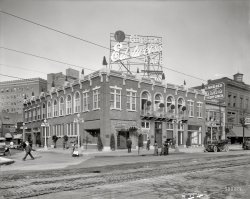
MAY CONTAIN NUTS

Search Shorpy
SHORPY ART

Framed or unframed, desk size to sofa size, printed by us in Arizona and Alabama since 2007. Explore now.
Join and Share
Ad-Free Shorpy
Shorpy is funded by you. Patreon contributors get an ad-free experience.
Learn more.

Recent comments
- Baldwin 62303
- Baldwin VO-1000
- Cold
- No expense spared
- Tough Guys
- Lost in Toyland
- And without gloves
- If I were a blindfolded time traveler
- Smoke Consumer Also Cooks
- Oh that stove!
- Possibly still there?
- What?!?
- $100 Reward
- Freeze Frame
- Texas Flyer wanted
- Just a Year Too Soon
- WWII -- Replacing men with women at the railroad crossing.
- Yes, Icing
- You kids drive me nuts!
- NOT An Easy Job
- I wonder
- Just add window boxes
- Icing Platform?
- Indiana Harbor Belt abides
- Freezing haze
- Corrections (for those who care)
- C&NW at Nelson
- Fallen Flags
- A dangerous job made worse
- Water Stop
Member Photos
The Shorpy
Print Emporium
Print Emporium
Search Shorpy
Search results -- 30 results per page
- Stakes and a Grille: 1940
- ...
I wonder how they paid tolls?
(The Gallery, Cars, Trucks, Buses, San Francisco, W. Stanley) ... Posted by Dave - 08/11/2018 - 12:17pm -

- Big Rig: 1947
- ... "Duel" truck A great movie!
(The Gallery, Cars, Trucks, Buses, San Francisco) ... Posted by Dave - 08/01/2018 - 6:17pm -

- Hooked: 1919
- ... posted on Shorpy.
luvinthelacquerFoy
(The Gallery, Cars, Trucks, Buses, Pretty Girls, W. Stanley) ... Posted by Dave - 09/16/2014 - 12:34pm -

- Wurlitzer: 1910
- ... to be supporting the overhead power line for the street cars. Or is the post it uses just outside of the frame.
I must be blind ... Posted by Dave - 07/29/2012 - 2:42pm -

- Vanderbilt Cup: 1908
- ... Duray with the Lorraine-Dietrich #18.
(The Gallery, Cars, Trucks, Buses, G.G. Bain, Sports) ... Posted by Dave - 05/09/2009 - 10:52pm -

- Ex-Tourist Attraction
- ... View full size.
(ShorpyBlog, Member Gallery, Cars, Trucks, Buses, tterrapix) ... Posted by tterrace - 07/31/2017 - 10:06pm -

- Sign Gang: 1925
- ... "mushroom signs".
(The Gallery, Cars, Trucks, Buses, San Francisco, W. Stanley) ... Posted by Dave - 02/18/2015 - 12:26pm -

- Tin Can Tourists: 1921
- ... at the fringe in the windows of the car.
(The Gallery, Cars, Trucks, Buses, D.C., Natl Photo, Sports) ... Posted by Dave - 09/11/2011 - 1:26pm -
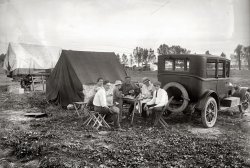
- What, Me Worry?
- ... the fake Rolls-Royce
radiator appeals.
(The Gallery, Cars, Trucks, Buses, Chris Helin, San Francisco) ... Posted by Dave - 11/25/2016 - 9:38am -
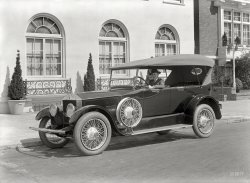
- The Levee Was Dry: 1942
- ... songwriting is hard!
(The Gallery, Arthur Rothstein, Cars, Trucks, Buses, Memphis, Railroads) ... Posted by Dave - 01/09/2018 - 11:00am -
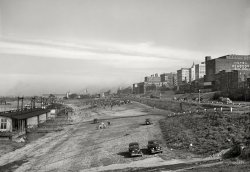
- Dogs to Go: 1923
- ... due to vendor/caterer Harry M. Stevens.
(The Gallery, Cars, Trucks, Buses, Eateries & Bars, San Francisco, W. Stanley) ... Posted by Dave - 12/05/2014 - 8:33pm -
![Dogs to Go: 1923 San Francisco circa 1923. "Buick touring car at Victor's Dog." Not to be confused with Nipper, that other (RCA) Victor dog, and where's the bun? 6½ x 8½ inch glass negative, originally from the Wyland Stanley collection. View full size.
Curb ServiceThe attractive young woman on roller skates is a few years off.
Cliff HouseThe Buick is parked in front of the Cliff House on Point Lobos Avenue in the city. On the sidewalk, actually. Here's a 1912 comparison view that shows the same storefront albeit with a different occupant.
This is the third incarnation of the Cliff House, finished in 1909. The restaurant portion is to the left with the curtained windows, while Victor's Dog occupies an addition built around 1911. It's easily discernible by the color change and slight offset in the facade. A close examination of the original print of the 1912 photo indicates a cigar vendor was the original occupant.
The previous two Cliff Houses, both built of wood, burned to the ground in 1894 and 1907 respectively. The owner didn't need another warning, and this version was constructed of bunker-like concrete nearly a foot thick. It's still standing today.
[Cliff House in 1955. - Dave]
SurvivorsFinally. In this series of fine automobiles of yesteryear a brand that is still with us. Same for the hot dog that rose to national fame due to vendor/caterer Harry M. Stevens.
(The Gallery, Cars, Trucks, Buses, Eateries & Bars, San Francisco, W. Stanley)](https://www.shorpy.com/files/images/SHORPY-157-01.thumbnail.jpg)
- The Long, Long Factory: 1941
- ... easy to find---the one with a window.
(The Gallery, Cars, Trucks, Buses, Industry & Public Works, John Vachon) ... Posted by Dave - 01/17/2021 - 6:44pm -
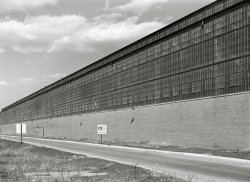
- Looking Back: 1972
- ... looking back." Our daily dose of the Cornetts and their cars. Print from 35mm negative by William Gedney. Gedney Photographs and ... Posted by Dave - 10/05/2010 - 6:11pm -
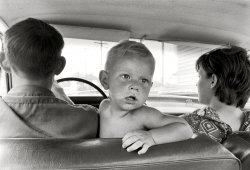
- Testing Fire Engines: 1913
- ... the old-fashioned solid rubber kind.
(The Gallery, Cars, Trucks, Buses, G.G. Bain, NYC) ... Posted by Dave - 09/08/2011 - 11:57am -
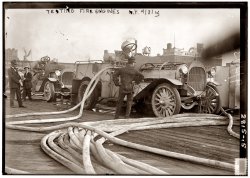
- A Late Start: 1940
- ... 1928-32, it sure looked very different from the "new" 1940 cars; nowadays a ten or twelve year old car much more closely resembles the ... Posted by Dave - 02/02/2012 - 5:33pm -
![A Late Start: 1940 October 1940. "Oldest Sauer boy cranking family car. Cavalier County, North Dakota." 35mm nitrate negative by John Vachon. View full size.
Evolving Automotive Design Though this handsome big sedan was likely a model from about 1928-32, it sure looked very different from the "new" 1940 cars; nowadays a ten or twelve year old car much more closely resembles the 2012 models.
The Car1928-29 Dodge Victory Six.
SpinmeisterLooks like that kid knows what he's doing, as he appears to be pulling on that crank instead of pushing -- one of two precautions necessary to avoid a broken arm/wrist should the engine kick back. The other precaution was to grasp the crank so as to keep the thumb on the same side of the handle as the fingers.
Incidentally, emergency cranks are still supplied with small marine diesel engines. At least one model, made in Japan, carries a warning label: "Adult males only! Women and children not allowed!"
The trunkNow I know why they call it that.
My oh myit really is flat in North Dakota, I think I can see Moose Jaw across the border.
Watchful dogHe's keeping an eye on any oncoming traffic.
A Late Start: 1940There are 14 other photos of the family that were taken by John Vachon, but none gave the first names of any of the family members. My research indicates clearly that the father in the truck was Peter Sauer, and the son was Clarence Sauer. Clarence died in Cavalier County is 2006. I talked to the widow of one of Clarence's brothers. She didn't know about the photos. She is going to get me in touch with one of Clarence's sisters, who is in at least one of the other photos.
[The number of photos is at least 25, including many not in this gallery that don't have captions. For example, three other photos of this car. - Dave]
Sauer is a familiar name.....I grew up with a family of Sauers who lived around and in the towns of Carpio and Foxholm North Dakota. I wonder if they are related to the Sauer pictured in this photograph?
(The Gallery, John Vachon, Rural America)](https://www.shorpy.com/files/images/SHORPY_8a32547a.thumbnail.jpg)
- Expert Lubrication: 1939
- ... and farming classes based on need.
(The Gallery, Cars, Trucks, Buses, Gas Stations, Russell Lee) ... Posted by Dave - 11/17/2017 - 11:36am -
![Expert Lubrication: 1939 February 1939. "Service station in Harlingen, Texas." Medium format negative by Russell Lee for the Farm Security Administration. View full size.
Cans Along the BorderThis is the service station of Lonnie Wade Molder (1911-1993), the son of Abraham Molder and Pearl Adair. Lonnie graduated from Harlingen High School in 1928, and then Brownsville Junior College in 1930. He married Edna Faye Swisher in 1935, and they had four children. It appears that he owned this station based on Harlingen city directory entries from 1944 to 1948.
Of interest in the photo is the array of oil cans that are the border to the shrubs at both the left and right of the photo as well as the change in gas price, from 16 to 15 cents, as seen on the sign on the canopy above the pumps. All of the planters, including the ones attached to the windows, appear to be reutilized gas tanks. A clearer view of the "Won Up" soda sign is below.
The Chevrolet pickup truck is a 1937 model and cost $515. This was the first year for the all steel cab (no wood). Based on the license plate, I believe this photo is actually from 1938 (the 1939 - 1941 commercial plates had "Texas" at the top). The enlarged license plate is also below.
Molder continued to own and operate the station into at least 1948. By 1950 he was a partner in North Side Welding & Repair down the street at 622 Commerce. By 1956 he had become the assistant manager for the service station at Harlingen Air Force Base (now Valley International Airport). He eventually went back to welding, and he was employed with Gulf Welding Supply in Harlingen for many years.
It appears that he retired in 1975. He and his wife then moved to LaFeria, Texas, in 1979, and by 1992 they were living in Ingram. He died the next year, Edna in 2006. From her obituary we learn that they met while she was still in grade school at South Ward School (now Bowie Elementary). Since he was seven years older, they would not have attended school together for any long period of time.
Molder's obituary mentions his involvement in the Masonic Lodge of both Harlingen and LaFeria. He served as the secretary for the Harlingen lodge for 35 years, he was a 32nd Degree Mason, and he received their Golden Trowel award in 1991.
Try that todayTexaco and Shell pumps at the same station!
Competing Brands?This is the first gas station I've ever seen with pumps for at least two different brands of gas, and the third pump seems to be unmarked. Was this common before WWII?
[For more buffet-style gas, click the links below. - Dave]
https://www.shorpy.com/node/4287
https://www.shorpy.com/node/20712
Flowers by FordI believe that the planter on the ground at center is made from a Model T gas tank.
Who dropped the ball?Unless my vision is failing me, this is one of the first pictures of a service station, convenience store or street scene that does not have an advertising sign for Coca-Cola, although I do see that the 7 Up rep and some other unknown beverage did get advertising signs as did the telephone company that is also a fixture in most old Shorpy photos of this nature.
[No Coke. Pepsi! - Dave]
An original "pumping gas story"During WWII, my uncle in Vinita, Oklahoma, owned a wholesale gasoline business. He had a 750-gallon tanker truck and would deliver to nearby country gas stations and to farms that had their own small storage tanks. My cousin and I, both 10 years old, would ride along to add interest to our lazy summer. In those days, there were two grades of gas, Ethyl and Regular. At one stop, he made the error of filling the Ethyl underground tank with Regular. In a hurry, he left the two of us to hand pump the Regular into the glass bowl and then drain it into the Regular tank. Ten gallons at a time. When he returned, both of us kids were really worn out. An aside: all gas was rationed. Civilians had 3 classes: A, B, and C. I think for 4, 8, and 12 gallons per week. Then there were commercial and farming classes based on need.
(The Gallery, Cars, Trucks, Buses, Gas Stations, Russell Lee)](https://www.shorpy.com/files/images/SHORPY-8b37234a.thumbnail.jpg)
- In the Cloud: 1923
- ... -tterrace
Argh! Trying again...
(The Gallery, Cars, Trucks, Buses, Chris Helin, San Francisco) ... Posted by Dave - 06/20/2016 - 2:57pm -
![In the Cloud: 1923 San Francisco, 1923. "Studebaker rally car." Possibly a veteran of one of the brass-era Glidden Tours or similar event. 5x7 glass negative. View full size.
Bio neededThe young guy with the armband -- I want to know every single tidbit of his life from that moment forward. Such is the Shorpy allure.
Stockton?Just wondering: why does this old Stude have the name "Stockton" emblazoned across the radiator?
[Emblazoning your radiator with a custom badge proclaiming your home town seems to have been A Thing for several decades, as with this later San Francisco Studebaker. -tterrace]
Interesting, but for me it raises the question: only in California?
Exactly - I had never noticed this particular emblazoning on ANY old car before this one, from ANY state. Maybe someone will chime in with more information...
Enter, stage rightI'm pretty sure the Studebaker is making its entrance on the stage of the U.C. Berkeley's Greek Theatre. The doorways and columns sure look the same. See photo below.
The campus location might also explain the two "California" pennants prominently displayed across the auto.
[I think you're right, but there was no photo attached to your comment. -tterrace
Argh! Trying again...
(The Gallery, Cars, Trucks, Buses, Chris Helin, San Francisco)](https://www.shorpy.com/files/images/SHORPY-990.thumbnail.jpg)
- The Hill: 1938
- ... The men were treated like cattle: they slept in box cars. When the strike ended, so did their wages. But the money helped build ... Posted by Dave - 04/24/2011 - 10:46pm -
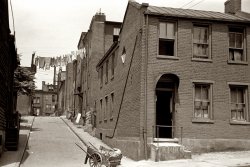
- Aquatic Park: 1966
- For a change, here are some cars in San Francisco that aren't 90 to 100 years old. My favorite part, ... Posted by tterrace - 09/08/2018 - 10:23am -
![Aquatic Park: 1966 For a change, here are some cars in San Francisco that aren't 90 to 100 years old. My favorite part, though, is the family photo op in progress over on the left, which I just now noticed. I was in Ghirardelli Square when I took this Kodachrome slide in summer 1966. View full size.
Chevrolet Impala 1963Those two guys in the white shirts checking the Super Sport flags on the front fender. Hopefully it was a 409.
Great SpotAnd it looks like the folks by the VW Bus and the very red service truck are waiting for you to take the shot and join them. Nicely timed.
That green VWI wonder if it's the same one that kept appearing during the "Bullitt" chase scenes?
Intriguing Moment!My eye was drawn to the red Chevy truck on the right, perhaps belonging to a sign company, with a very tall stepladder and another lying on its side on the sidewalk -- looks almost like a setup for a slapstick comedy movie, especially with the remarkably large man walking toward it in the background.
I wonder if the guys in the white shirts might have been looking at that 1962 Cadillac convertible parked at the curb. Impressive car.
Made in JapanI'm curious about the Japanese Group 2 merchant ship docked pierside on the right -- the rising sun is clearly astern. Maybe its a the delivery of transistor radios, or the first Honda motorcycles. It certainly wasn't the first of many that brought cheaper merchandise to the USA.
Japanese shipsDowner asked about one of the ships. I just happened to go over to Pier 45 that day and took this shot of them. The closer is the Djakarta Maru; even fully enlarged all I can make out of the other is [Something] Maru in small letters below five Japanese characters. Click to enlarge.
Klaveness shipI made a mistake in my post. That ship is not Klaveness, it
looks to be instead a K Line ship (Kawasaki Kisen Kaisha)
Gray car at far leftLooks like an Austin A55 Cambridge.
'55 Olds 88Grey and white car parked in front of the Cadillac convertible.
Aquatic Parkcirca 1930s
Japanese shipThe grey vessel was owned by K-Lines, which still exists to this day and operates car carrier and container vessels.
(ShorpyBlog, Member Gallery, tterrapix)](https://www.shorpy.com/files/images/san_francisco_1966aug_roll1-12_aquatic_park.thumbnail.jpg)
- Daniels & Fisher: 1910
- ... next to me now as I am writing this.
(The Gallery, Cars, Trucks, Buses, Stores & Markets) ... Posted by Dave - 03/06/2018 - 9:39pm -
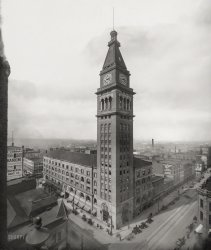
- Fledgling Fageols: 1918
- ... of bearings! Very labor-intensive!"
(The Gallery, Cars, Trucks, Buses, Factories, W. Stanley) ... Posted by Dave - 05/03/2018 - 6:01pm -
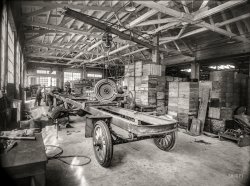
- Steuben Glass: 1937
- ... Love that Checker Cab! They built some weird looking cars over the years.
New York's first glass house The Steuben ... Posted by Dave - 09/11/2013 - 4:21pm -
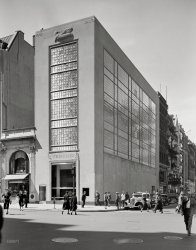
- Petroleum Panorama: 1922
- ...
Free adjustments and advice will be given on all cars. Consult me if your car is not running right. Ladies driving their own cars will find us always ready to make any adjustments on their tires, radiator ... Posted by Dave - 08/07/2012 - 9:58pm -
![Petroleum Panorama: 1922 "Service station, First Street and Maryland Avenue." Spectacularly detailed view of the Capital Gasoline Station in Washington, D.C., in 1922. View full size. National Photo Company Collection glass negative. View even larger.
Supreme locationAmazingly detailed photo. The mechanic conferring with someone, possibly owner. Another man getting what looks to be a sip of water. And its location at 1st and Maryland placed it right across the street from the Capitol, near or on the spot of the Supreme Court building (cornerstone laid 1932, completed 1935).
[Not quite. This was at First and Maryland SW, not NE. Thanks to PER for the nifty 1923 map. - Dave]
Capitol GasThis is the Capitol Gasoline Station,"The Home of Filtered Gas," at First and Maryland Southwest; Arther Seagren, proprietor. It appears to have opened in 1919 and survived until at least 1930. Now the location of the U.S. Botanic Garden.
Free adjustments and advice will be given on all cars. Consult me if your car is not running right. Ladies driving their own cars will find us always ready to make any adjustments on their tires, radiator or batteries.
....
No waiting; large cement driveways. Ten visible oil and gasoline pumps which show you the amount and quality of the gas you buy.
....
Air boys who will fill your tires and batteries free of charge. No charge for changing oils in motors. Transmissions and rear axles filled while you wait.
...
Alemite Service - we are now equipped to alemite any make of car. Having recently installed the very latest alemite equipment and three large alemite stands, we can alemite your car in a very few minutes and day until 6:30 p.m.
...
Open every evening until 11 o'clock
Going up?Is that a ladder to nowhere or a "Stairway to Heaven"?
Just curious...Why is there a ladder leading straight up (to nowhere) on the top of the building on the left?
(The Gallery, D.C., Gas Stations, Natl Photo)](https://www.shorpy.com/files/images/30283u.thumbnail.jpg)
- American Dream: 1936
- ... www.bigbrutus.org
(The Gallery, Arthur Rothstein, Cars, Trucks, Buses, Mining) ... Posted by Dave - 07/23/2014 - 12:59pm -
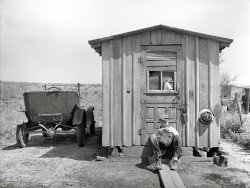
- Everything Must Go: 1920
- ... 14th and U NW. Given the advertisements for sight-seeing cars I'm more inclined to think this location is downtown where tourists would ... Posted by Dave - 08/08/2012 - 1:03pm -
![Everything Must Go: 1920 Washington, D.C., circa 1920. "Affleck's Drug Store." Hurry over now for the big closeout! National Photo Co. Collection, Library of Congress. View full size.
Way Down East: 1921Note the movie poster to the right side of photo: "Way Down East" began a one week run at the Garrick on July 11th, 1921. That's the "when", figuring out the "where" is a bit trickier. The original Affleck's Drug Store (proprietor Phillip J. Affleck, Jr) was located at 1429 Pennsylvania Ave. An advertisement in 1914 lists 3 locations: 904 G st NW, 15th and F sts NW, 9th and D sts NW. A 1917 article refers to an additional branch at 14th and U NW. Given the advertisements for sight-seeing cars I'm more inclined to think this location is downtown where tourists would congregate rather than up on U street.
Where Are The Crowds?Why aren't the townspeople flocking to this sale to get their one-third-off bathing caps?
Maybe they are all next door, at the hat cleaners.
A buyout!Peoples Drug, buying out a mom-and-pop pharmacy. A foreshadowing of today's CVS and Walgreens expansion.
Way Down EastOn the far right is a poster advertising the silent film "Way Down East" released 9-3-20 - with Lillian Gish and Richard Barthelmess, directed by D W Griffith. Interesting backstory and comments at http://www.imdb.com/title/tt0011841/. The movie was remade with the same title in 1935, with Henry Fonda, Spring Byington, Margaret Hamilton and other familiar names
Ghostly Shadow of the CrutchHas anyone noticed the shadow of the man at the right with folded papers in his arm seems to include the movement of a crutch? Possibly a news seller who is a vet of the Great War?
[Maybe that's his other crutch leaning against the doorway. - Dave]
15th & FDoesn't the writing along the bottom say "Afflecks Drugs, 15th & F"?
The Rhodes Tavern, againSo if this is 1921 and 15th and F NW, then this building must be the reconfigured Rhodes Tavern, where the British soldiers drank after burning the White House. (The lamp right above the doorway must be the same lamp in the upper corner of this shot, taken in the opposite direction, about the same time: https://www.shorpy.com/node/4177). As further confirmation, the arrangement of the bricks above the upper story window match those in the drawing of the building on the memorial marker on the current spot: http://flickr.com/photos/65193799@N00/89418033.
Rhodes TavernThis looks like the building that was Rhodes Tavern on the NE corner of 15th and F. It was built in the early 18th century and was demolished in the 1980s. There is a plaque on the building now.
Way Down Middle EastThe fluttering awnings and arched windows give an almost Middle-Eastern bazaar quality to this shot.
(The Gallery, D.C., Natl Photo, PDS, Stores & Markets)](https://www.shorpy.com/files/images/29975u_0.thumbnail.jpg)
- Twin Falls II: 1941
- ... Street View was taken in 2012.
(The Gallery, Cars, Trucks, Buses, Russell Lee, Stores & Markets) ... Posted by Dave - 09/23/2018 - 10:57am -
![Twin Falls II: 1941 From start to finish, a life on wheels.
May 1941. "Main street of Twin Falls, Idaho. According to Idaho State Guide (Federal Writers Project), this town has the distinction, unusual in towns in the section, of being planned." Photo by Russell Lee for the FSA. View full size.
Corner of Main Avenue East and HansenThe air-conditioned Rogerson Hotel on our left was at the north corner of Main Avenue East and Hansen Street East, so this view has us looking southeast.
+75 Much lower and much leafierMain Avenue East has received a good deal of urban forest plantings in the last three-quarters of a century, while the taller buildings have generally lost their upper stories. The Rogerson Hotel building is visible at left; its top story went after a 1935 fire. The entire building was demolished as too far gone to save in 2016, one year after this Google cap.
The Golden Rule in the next block is now a furniture store, and many of the buildings we see have fallen victim to cases of "façade modernization" disease, when they haven't fallen altogether.
[Dear people: Please learn how to embed a google Street View before posting. I'm tired of doing it for you. - Dave]
Dave, the instructions said "links will be converted" and I trusted that. Bad link removed.
How to include Google Street View in a commentDave, it must be frustrating to keep telling people how to include Street View URL links in comments. You did so for me some time ago and I thank you. But the latest time I included such a URL it was just random luck the URL worked. I'd forgotten the trick and had no way to find it.
Perhaps the working trick of referencing Street View could be put at the top of the Comment Guidelines? Or even added as an item in the comment entry form? "Paste a street view URL link"?
[There is no "trick." Simply apply eyeballs and brain to what's in front of your nose. And of course you could always google it! - Dave]
Easier, but ....This angled parking layout was very popular in the Midwest of my youth, though backing out safely often depended on the restraint of one's fellow motorists as well as one's own lumbar flexibility.
Unfortunately, becoming accustomed to "nose-in" parking while learning to drive often had a deleterious effect on one's ability to parallel park for the driver's license test!
Right over thereHe said he'd leave the package in a gray Plymouth, or was it a Dodge?
And NowThe view is Main Street at Hansen, looking southeast. The remains of the air-conditioned Rogerson Hotel are at the left, the building with the ugly (aluminum?) siding. It was torn down after this Street View was taken in 2012.
(The Gallery, Cars, Trucks, Buses, Russell Lee, Stores & Markets)](https://www.shorpy.com/files/images/SHORPY-8c01109a.thumbnail.jpg)
- National Airport: 1941
- ... worked for the parking lot there and we used to count cars all night, and watch planes for hours. It was so quiet back then. about ... Posted by Dave - 03/26/2014 - 1:23pm -
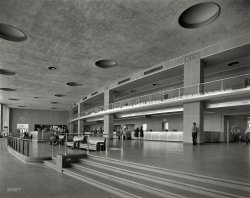
- Desert Trip
- ... He rarely even did that.
(ShorpyBlog, Member Gallery, Cars, Trucks, Buses) ... Posted by Mvsman - 09/18/2011 - 11:16pm -
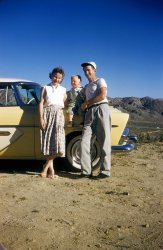
- Golden Cargo: 1920
- ... especially watermelons and lettuce.
(The Gallery, Cars, Trucks, Buses, Chris Helin, Medicine, San Francisco) ... Posted by Dave - 04/22/2015 - 9:08pm -
![Golden Cargo: 1920
Fruit as First Aid to Convalescence
"Two Tons of Oranges -- the Gift of the Alhambra-San Gabriel Red Cross Chapter, to the Sick and Disabled Soldiers at Letterman Hospital, San Francisco. Your Turn Next!"
This legend in bold letters on the side of a two-ton auto truck advertised the merits of fruit as a first aid to convalescence over a circuit of five hundred miles, as the golden cargo made its way along the valley of the Southern California town on to the Pacific Coast. Newspapers all along the route gave a still wider publicity to the generosity of the Fruit Growers of the Sunset state for in addition to the oranges there were quantities of lemons and grapefruit, while at Los Angeles the local Red Cross Chapter added a contribution of seventy-five pounds of candy.
--Better Fruit, June 1920
March 1920. "Republic motor truck at Letterman Hospital, San Francisco, with cargo of oranges." 5x7 glass negative by Christopher Helin. View full size.
In the dayswhen men were men and tires were solid!
Before Agricultural InspectionHow they got it across the California border is a question.
[They wouldn't have to, since they started out in California. Hello? - Dave]
Fruit Was Always WelcomeMy father spent almost two years at Letterman Hospital during WWII and said the most excitement among the patients, all soldiers, was the arrival of fresh fruit, especially watermelons and lettuce.
(The Gallery, Cars, Trucks, Buses, Chris Helin, Medicine, San Francisco)](https://www.shorpy.com/files/images/SHORPY-320-03.thumbnail.jpg)
- Edelweiss Cafe: 1912
- ... Motor City Interesting photo. 1912 and there are four cars and no horses (or horse droppings) in the shot. I wonder if Detroit ... Posted by Dave - 08/14/2012 - 8:28pm -
